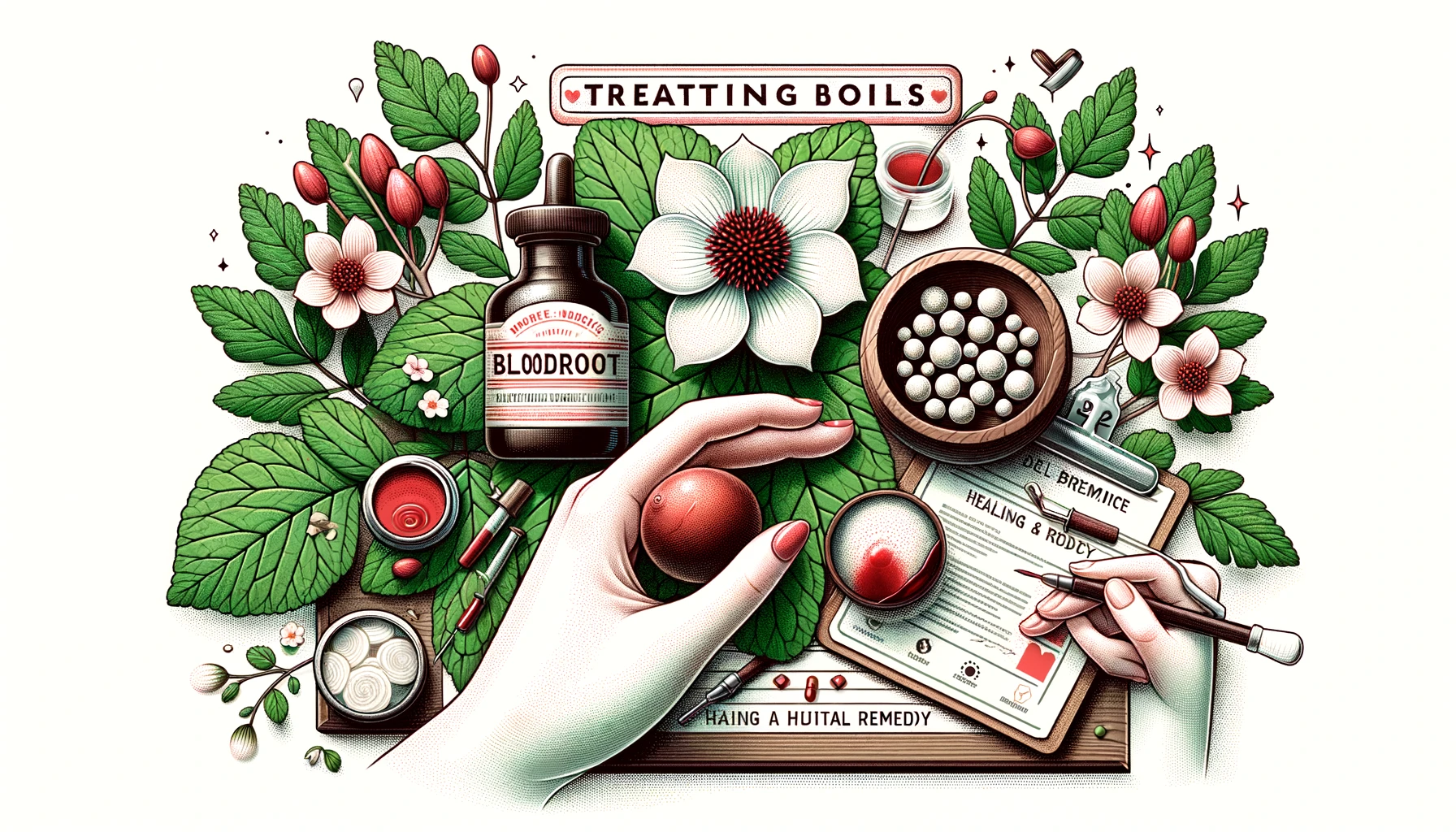
With a rich history of medicinal uses, the intriguing Black Salve, derived from the Bloodroot plant, has been utilized for centuries for its potent healing properties. Among its many uses, the salve is often employed for the treatment of skin conditions, particularly boils. This comprehensive guide will delve into the science behind Black Salve, its historical significance, and how to use it effectively for treating boils.
Unmasking the Power of Black Salve: An Introduction
Black Salve, also known as drawing salve, is a substance derived from various herbs, most notably the Bloodroot plant. The salve’s key components are zinc chloride and bloodroot. This thick, tar-like substance is often used as an alternative treatment for various skin conditions, including warts, moles, skin tags, and boils. While its use is not supported by all medical professionals due to potential risks, many traditional healers and proponents of natural medicine swear by its efficacy.
The effectiveness of Black Salve lies in its potent ingredients. The zinc chloride is a powerful antiseptic that helps to cleanse the skin, while the bloodroot, a perennial plant native to North America, has a long history of medicinal use by Indigenous tribes. These groups primarily used bloodroot to treat infections and skin diseases, thanks to its ability to draw out toxins and other impurities.
Historical Overview on the Usage of Bloodroot
Bloodroot has been used for centuries and holds a special place in the annals of traditional medicine. The plant has been revered by Native American tribes for its extraordinary healing properties, primarily for treating skin conditions and respiratory issues. The root, from which the plant derives its name, was often crushed into a pulp or powder and applied to the skin as a remedy for conditions such as boils, skin ulcers, and ringworm.
The use of bloodroot extended to early European settlers in North America, who incorporated the plant into their own medical practices. Over time, bloodroot has been used in various forms, from powders and tinctures to salves and ointments. Today, it continues to be a key ingredient in Black Salve, thanks to its potent healing properties.
How Black Salve Works: A Step-by-Step Guide
Understanding how Black Salve works requires a basic understanding of its two essential ingredients. The first, zinc chloride, acts as a powerful disinfectant, helping to cleanse the skin from bacteria and other pathogens. The second, bloodroot, contains a unique compound called sanguinarine, which has been found to have anti-inflammatory and antimicrobial properties.
When applied to a boil, Black Salve penetrates the skin, drawing the infection and toxins to the surface. The salve’s drawing effect helps to pull the pus out of the boil, thereby speeding up the healing process. It is important to note that while this process can be quite painful, many users find the results to be worth the discomfort.
Best Practices for Treating Boils with Black Salve
When using Black Salve to treat boils, it’s essential to follow some best practices to ensure its effectiveness and reduce potential risks. First, before applying the salve, cleanse the affected area thoroughly with warm water and mild soap. This can help to remove any dirt or bacteria that could inhibit the healing process.
Once the area is clean, apply a generous amount of Black Salve to the boil, ensuring it’s completely covered. Cover the area with a bandage and leave it for about 24 hours. After this period, remove the bandage and rinse the area with warm water. It’s crucial to monitor the area for any signs of infection or adverse reactions.
In conclusion, while Black Salve may not be universally recognized in modern medicine, it’s undeniable that this ancient remedy has stood the test of time in traditional healing practices. With proper use and care, Black Salve can potentially offer an effective, natural solution for treating boils.
